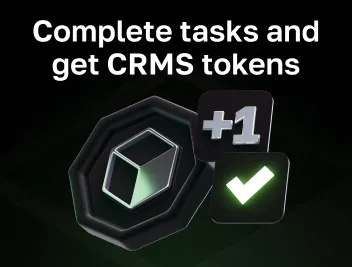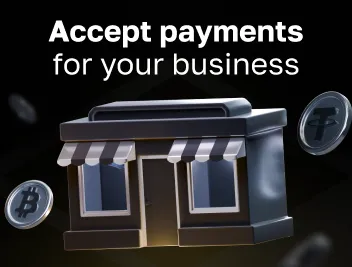
How To Make Your Own E-Commerce Website In 2026
Making an e-commerce website in 2026 can be a profitable business. It is an inherently complex online platform which makes the buying of goods or services easier due to digital transactions.
Currently, it has become an indispensable tool for different companies to reach a wider audience, sell products and services worldwide and expand their business significantly. If you plan to build an e-commerce website for your business, you can do it on your own. However, successfully creating and starting such a site requires careful planning. Because of it, here is a detailed 8-step guide on how to make your own e-commerce website in 2026:
- Define your business goals and target audience;
- Choose your content management system (CMS);
- Create an account (or get web hosting);
- Select an e-commerce theme or template;
- Customize your site and build out web pages;
- Create product listings;
- Set up a payment gateway, inventory and tax tools;
- Test and launch your e-commerce site.
Let's take a look at each step to launch your own website.

Step 1. Define Your Business Goals and Target Audience
Before you start your own e-сommerce website, it is important to define your goals and target audience. This step helps to make the right decisions about the design, functionality and marketing strategy. Here are some key questions to ask yourself:
- What do I want to achieve with my website: increase sales, expand your customer base or build brand awareness?
- What products or services will I sell?
- Who is my target audience? What is its age, gender, interests, and needs?
- How will my business compete with other ones?
Answering these questions will help you create an e-сommerce website that will attract your right target audience, meet their needs, and help you achieve your business goals.
Step 2. Choose Your Content Management System (CSM)
Choosing the right content management system is one of the key decisions that anyone who is about to create their own website will have to make. It is not just a technical decision but a strategic step that can ultimately ensure success in the market.
It is essential that the system is flexible, scalable, and meets the growing needs of your business. It should provide not only basic content management functions, but also advanced e-commerce capabilities such as inventory management, payment system integration and user personalization.
Equally important is the ease of use of the CMS for both developers and end users, as well as SEO optimization capabilities to ensure good visibility of your site in search engines. In addition, support for mobile devices and compliance with modern security standards are also mandatory requirements.
Some of the most popular CMSs are Shopify, WooCommerce, Magento, BigCommerce, and more.
In addition, Cryptomus has developed its own plugins for accepting crypto payments for each of the listed platforms:
- WooCommerce plugin for Wordpress
- Cryptomus plugin for Shopify
- Cryptomus Magento 2 plugin
- Cryptomus plugin for BigCommerce
Many platforms offer versions that allow you to create an e-commerce site for free. Sign up and test several platforms to see which one best suits your needs.
Step 3. Create an Account (or Get Web Hosting)
Once you have chosen your CMS, you need to create an account or purchase web hosting if your chosen platform requires it. Web hosting is a service that provides you with space on a server to store your e-commerce website.
Platforms such as Shopify and BigCommerce offer hosted solutions, meaning they handle the web hosting for you. If you prefer WooCommerce or Magento, you will need to choose a reliable web hosting provider.
Look for hosting that offers:
- Fast loading times;
- High uptime;
- Customer support.
Step 4. Select an E-Commerce Theme or Template
The appearance and usability can greatly affect the customer experience and their desire to make a purchase. In 2026, popular CMS platforms already include their own theme and template stores, but there are also third-party services, for example,ThemeForest, TemplateMonster, Creative Market.
Here are some tips for an easy choice:
- Choose a theme with a design that matches your brand and the type of products. Make sure the theme looks professional and modern.
- View theme demos to see how they look in reality and what interface elements are used.
- Check if the theme supports the features you need, such as product filters, built-in galleries, quick views, reviews, and rating systems.
- Make sure the chosen theme supports integration with the plugins and extensions you need.
- Choose a theme that offers convenient tools for customizing the appearance and functionality without the need for coding knowledge.
Step 5. Customize Your Site and Build Out Web Pages
This stage includes setting up basic site parameters, creating structured and attractive pages, and integrating the necessary functions and plugins. Use your CMS’s built-in tools or hire a developer and web-designer to customize the pages, layout and functionality of your website.
There are some tips how to do your e-commerce website setup more efficient:
- The home page is the first thing your visitors will see, it should be visually appealing and intuitive.
- Include a navigation menu, a slider or banner with key offers, a brief description of the business, and links to key sections of the site.
- Divide your products into categories and subcategories to make it easier for customers to find the products they need.
- Include customer reviews to increase trust in your brand.
Step 6. Create Product Listings
Creating product listings is one of the key aspects of starting an e-commerce website. Well-designed product cards not only attract customers’ attention but also increase their trust. Let’s look at this process in detail.
- Collect information about the products (name, description, photos, video review, prices, discounts);
- Specify unique identifiers for each product (SKU, article number), which will help with inventory management and accounting.
- Provide the ability to choose different product variations (size, color, model, etc.).
- If the product requires special care, add recommendations and instructions.
Step 7. Set Up a Payment Gateway, Inventory, and Tax Tools
Setting up a payment gateway is a crucial step in launching an e-commerce website. A payment gateway ensures secure transactions, which is a key factor for customer trust and the successful operation of a website.
For example, with Cryptomus, you can add one of the most popular and relevant payment methods — cryptocurrency — to your website. Also, Cryptomus offers integration with plugins such as WordPress, Shopify, WooCommerce, etc. Moreover, it offers API integration, payment by link, or QR code format. The Cryptomus payment gateway also offers a number of benefits such as:
- Low fees: Cryptomus offers one of the lowest fees on the market, ranging from 0.4% to 2%
- Auto-conversion: The service may automatically convert and store funds in stablecoins, eliminating the problem of crypto volatility;
- A personal manager who will contact you on Telegram after creating a Cryptomus account and connecting your Telegram account and will help you throughout the entire process.
We have covered all points about how to accept cryptocurrency on your website in our step-by-step guide to integrating crypto payments.
When it comes to setting up inventory management tools, some CMSs, like Shopify and BigCommerce, include built-in tools. You can also use third-party tools like TradeGecko, Veeqo, or Ordoro.
At this stage, it is also essential to research your business’s tax obligations depending on your jurisdiction (local, state, and federal taxes). Many platforms, like Shopify and WooCommerce, offer specific tools to calculate taxes automatically. If necessary, set up taxes manually by entering the tax rates for each jurisdiction.
Step 8. Test and Launch Your E-Commerce Site
Before launching your e-commerce website, you should test it to ensure everything functions correctly. Check for broken links, test the checkout process, and make sure the site loads quickly. Look at your website on different devices and browsers. Once you’re confident everything is in order, start your website and get ready to promote it.
By following our guide, you can create your own professional and multi-functional e-commerce website that meets your business goals and caters to your target audience.
FAQ
- How much does it cost to build an e-commerce website?
The cost of creating an e-commerce website depends on several factors:
- Platform;
- Design and Development;
- Integrations and Plugins.
On average, building an e-commerce website can cost between $1,000 and $5,000 for a small business.
- How many hours does it take to build an e-commerce website?
The time it takes to build an e-commerce website depends on the scale of the project and the level of customization. On average, it can take between 40 and 200 hours to build an efficient website.
- How difficult is it to build an e-commerce website?
Building an e-commerce website can be a complex and complicated process, especially for beginners. However, modern webservices make the process more accessible and manageable. Overall, with the right approach, advanced planning, and using available resources, it is possible to make an e-commerce website even without deep technical knowledge.
We hope our guide will help you take the first step towards starting your own business. Share your impressions in the comments!
Rate the article








comments
0
You must be logged in to post a comment